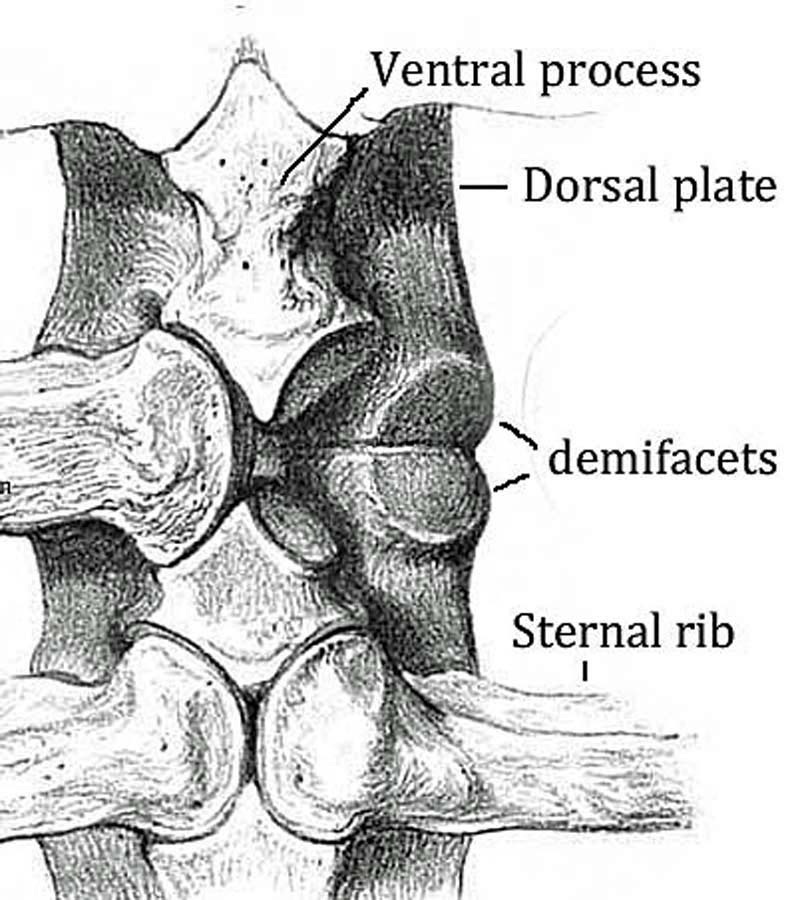Introduction to Walk Like a Sloth: lessons in ground sloth locomotion
 Getting Oriented
Getting Oriented
Only part of the mandible is in the traveling trunk–the chin and right lower jaw of the adult. The large alveolus or cavity on the superior (top) surface holds the front tooth or tusk, called the caniniform (“in the form or shape of a canine,” see tooth lesson). On the other side of the chin there’s part of the corresponding alveolus for the left caniniform. The narrow inward sloping shelf of bone anterior and between the front teeth is called the mandibular or predental spout. The teeth behind the caniniforms are called molariforms (“in the form of a molar”). A gap or diastema, separates the caniniform from the first molariform. Notice how deep the alveoli are and how close they approach the bottom of the jaw. These are long, deep teeth–the term for that is hypsodont–more on that in the tooth lesson too. The small hole at the side of the chin is the mental foramen which provides an exit for the mental nerve and blood vessels that serve the front teeth, chin and lower lip. There’s another exit on the opposite side of the jaw. The mandible has (4) teeth on each side—one (1) caniniform and three (3) molariforms.


